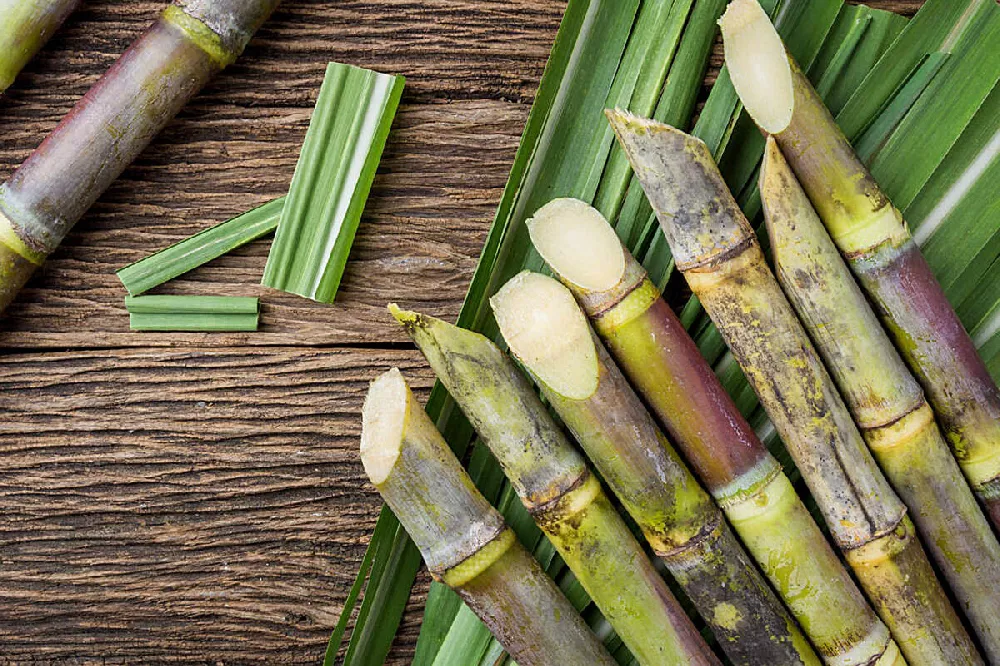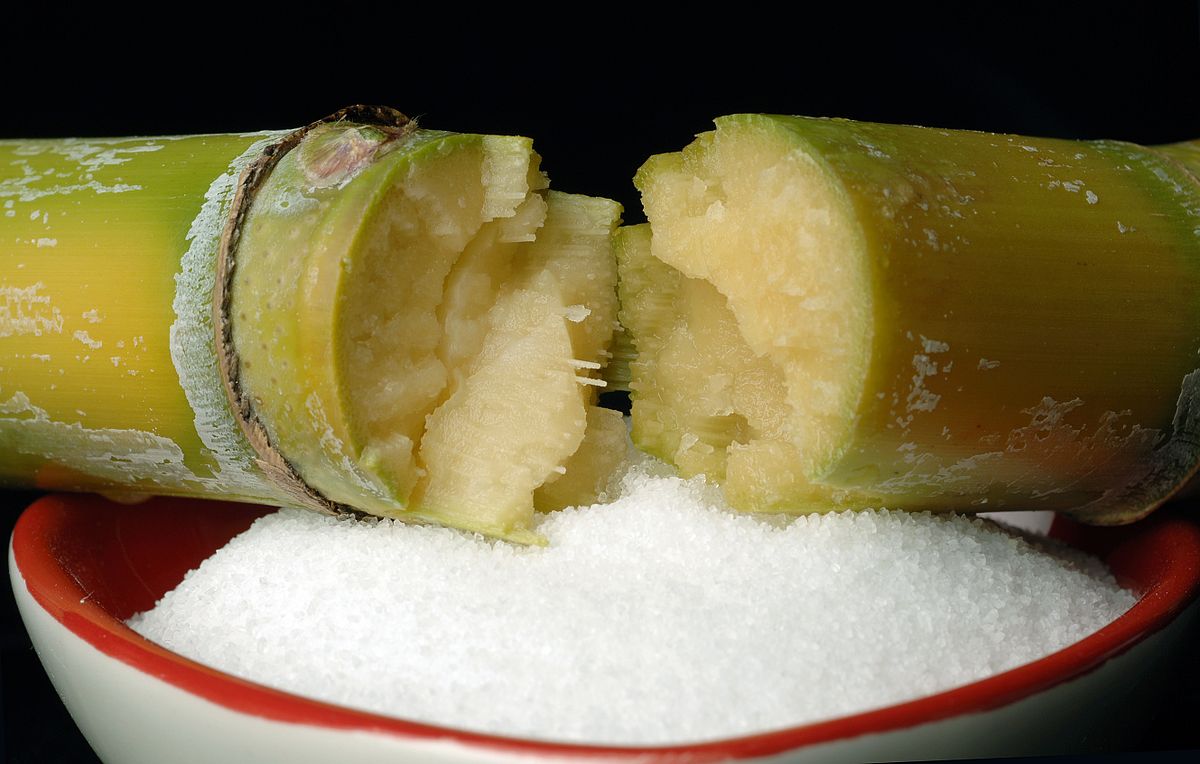The Trip of Cane Sugar Processing: From Harvest to Crystals
The Trip of Cane Sugar Processing: From Harvest to Crystals
Blog Article
An Extensive Guide to the Environmental Effect and Sustainability Practices in Walking Cane Sugar Handling
The environmental influence of walking stick sugar processing offers a complicated range of challenges that warrant mindful assessment. From soil destruction and extreme water use to the carbon impact associated with farming and production, the effects of conventional techniques are significant. What specific techniques can be executed to strike an equilibrium between performance and environmental stewardship?
Summary of Cane Sugar Handling
Cane sugar processing entails a series of organized steps that change sugarcane into refined sugar. At first, harvested sugarcane is transported to processing centers, where it undergoes cleansing to remove soil and particles. Following this, the cane is squashed to draw out juice, which is after that clarified by eliminating contaminations with home heating and the enhancement of lime.
The cleared up juice undertakes dissipation, where water is gotten rid of to concentrate the sugar content. These crystals are divided from the staying syrup making use of centrifugation, resulting in raw sugar.
The end product is then dried and packaged for distribution. Throughout this entire process, maintaining effectiveness and quality assurance is important to guarantee the sugar fulfills industry criteria. Each action in walking stick sugar processing not just contributes to the last product but additionally has effects for source usage and waste generation, setting the stage for conversations on sustainability and environmental effects connected with sugar manufacturing.
Ecological Obstacles of Production
The manufacturing of walking cane sugar presents numerous significant ecological challenges that warrant interest. One main problem is the substantial use agrochemicals, including chemicals and fertilizers, which can bring about soil destruction, biodiversity loss, and contamination of local water sources. The runoff from sugarcane fields commonly lugs these chemicals right into nearby environments, interrupting water life and affecting the wellness of neighborhoods reliant on these water bodies.
Another obstacle is the high power usage related to sugarcane processing. The boiling and refining stages need considerable warmth, primarily created by shedding nonrenewable fuel sources, contributing to greenhouse gas emissions. In addition, the expansive acreage required for sugarcane cultivation can result in deforestation and habitat damage, more intensifying environment modification and harmful wild animals.
Additionally, the labor techniques in some regions elevate moral concerns, as workers might encounter bad working problems and inadequate wages. This situation frequently bolsters a cycle of poverty in local communities. Cane Sugar Processing. Addressing these ecological obstacles is critical for establishing a lot more sustainable techniques in walking cane sugar manufacturing, ultimately profiting both the environment and the neighborhoods associated with this industry
Water and Land Usage Influence
Water resources and land usage are critical components in the walking stick sugar industry that dramatically impact the atmosphere. The growing of sugarcane calls for substantial water input, with estimates suggesting that it can take in approximately 2,000 litres of water per kilogram of sugar created. This extensive usage of water frequently causes deficiency of neighborhood water sources, affecting not only the sugarcane ranches however additionally bordering communities and neighborhoods that depend on the very same water resources for farming and residential usage.

In addition, land use for sugarcane growing can lead to logging and the conversion of all-natural habitats right into monoculture plantations. This method lessens biodiversity, disrupts neighborhood communities, and adds to soil deterioration. The growth of sugarcane areas frequently elbows in on valuable agricultural land, producing competitors for sources in between food and biofuel production.
Sustainable techniques, such as maximizing irrigation methods and carrying out plant rotation, are vital to minimize these impacts. By embracing a lot more reliable water use and land management techniques, the walking stick sugar sector can lower its ecological footprint, guaranteeing an equilibrium in between farming performance and ecological conservation.
Greenhouse Gas Emissions
Greenhouse gas exhausts stand for a significant environmental concern within the cane sugar processing industry, particularly as agricultural practices broaden to satisfy worldwide demand. The growing of sugarcane, a crop that thrives in tropical climates, relies heavily on artificial plant foods and chemicals, which add to laughing gas discharges. Furthermore, land-use modifications, including deforestation for new sugarcane plantations, launch co2 saved in plants and soil.
During handling, energy consumption is an additional significant source of greenhouse gas exhausts - Cane Sugar Processing. Lots of sugar mills use fossil fuels to power equipment and create warm, resulting in substantial carbon footprints. Furthermore, the transport of raw sugarcane and completed items adds layers of emissions via fuel burning in cars
The cumulative result of these discharges exacerbates environment change, posturing dangers not just to the atmosphere yet likewise to the lasting feasibility of the industry. Stakeholders need to acknowledge the immediate need for Source thorough techniques that resolve these discharges. This entails assessing existing agricultural techniques, processing techniques, and transport systems to determine locations for enhancement and reduction. Dealing with greenhouse gas exhausts is important for cultivating a more lasting walking cane sugar sector in an altering environment.

Lasting Practices and Innovations
Lasting practices and technologies are progressively essential in the cane sugar processing market as stakeholders look for to minimize ecological effects while keeping efficiency. One substantial improvement is the implementation of integrated plant management, which maximizes source use by integrating dirt management, bug control, and crop rotation strategies. This method boosts return while lessening chemical inputs and maintaining soil health and wellness.
Moreover, the adoption of renewable resource sources, such as biomass from sugarcane residues, has actually gained traction - Cane Sugar Processing. By converting waste products into energy, processing facilities can minimize their reliance on nonrenewable fuel sources, thus reducing greenhouse gas emissions
Water monitoring methods have likewise seen improvements through the recycling and reusing of water in processing plants, considerably minimizing freshwater usage. Innovations in innovation, such as accuracy agriculture, allow farmers to monitor plant health and wellness and resource use more successfully, ensuring sustainable cultivation practices.
Additionally, accreditation programs like Fair Profession and Jungle Alliance motivate ecologically accountable farming methods and promote social equity within the supply chain. By embracing these sustainable practices and developments, the walking stick sugar processing industry can enhance its resilience and contribute favorably to ecological stewardship.
Verdict
The ecological effect of walking stick sugar processing provides considerable difficulties, including soil destruction, high water intake, and greenhouse gas discharges, together with ethical concerns associated with labor techniques. Resolving these problems through lasting techniques, such as integrated crop management, renewable resource adoption, and water recycling, is important. By promoting eco accountable and socially equitable approaches in sugar manufacturing, the industry can mitigate its damaging results, making sure a webpage more lasting future for both communities and ecological communities associated with this industry.
Walking cane sugar processing entails a series of systematic steps that change sugarcane Find Out More into polished sugar. Each action in walking stick sugar handling not only adds to the final item but additionally has implications for source use and waste generation, establishing the phase for discussions on sustainability and ecological impacts linked with sugar production.
Greenhouse gas exhausts represent a substantial environmental problem within the walking stick sugar handling industry, especially as farming practices broaden to meet worldwide need.Lasting methods and technologies are increasingly vital in the walking stick sugar handling industry as stakeholders seek to minimize ecological impacts while preserving performance.The environmental impact of walking stick sugar handling presents considerable obstacles, including soil deterioration, high water consumption, and greenhouse gas emissions, together with honest problems related to labor practices.
Report this page